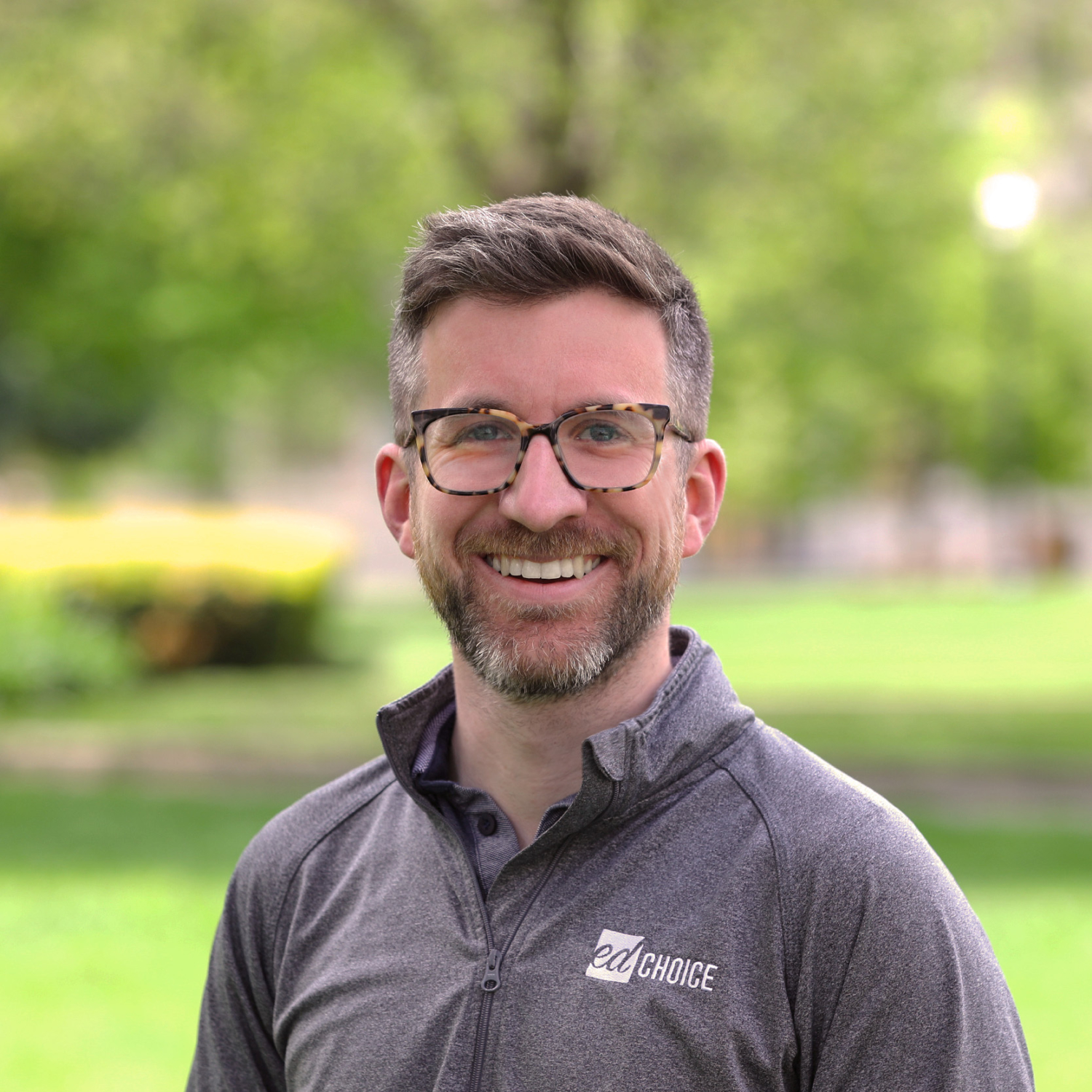Public Opinion Tracker Deep Dive: Let’s Zoom in on Homeschooling Opinion
Kids are heading back to school. Vaccines are getting stuck into peoples’ arms. The federal government has kept the spending spigot open. It looks more than likely that by the time school starts up next year, K–12 education will be back to pre-pandemic normality.
Or will it? Has the pandemic changed opinions and practices in ways that will remain? We don’t know yet, but as a part of our Public Opinion Tracker, we have been following opinions on education issues, and diving into some of them might give us a better guess as to what the future holds.
In this post, I’d like to dive deeper into the questions we’ve been asking parents about homeschooling.
The pandemic thrust millions of children into their homes as schools shuttered to stop the spread of the virus. While not really “homeschooling” (more like traditional schooling, just from home), the experience did give lots of families a glimpse into what homeschooling might look like were they to try it.
So what do they think? Since March of 2020 we have asked the following question to school parents:
“Homeschooling” is the education of a child mainly at home other than a school. It is usually conducted by a parent, tutor, or online teacher. Parents or guardians’ control and direct the curriculum, content, and subject matter. There is no association with a public or private school.
How have your opinions on homeschooling changed as a result of the coronavirus?
If you click through the PowerPoint slides that Morning Consult creates for us each month, you’ll see how overall responses have trended during the past year. It looks like this:
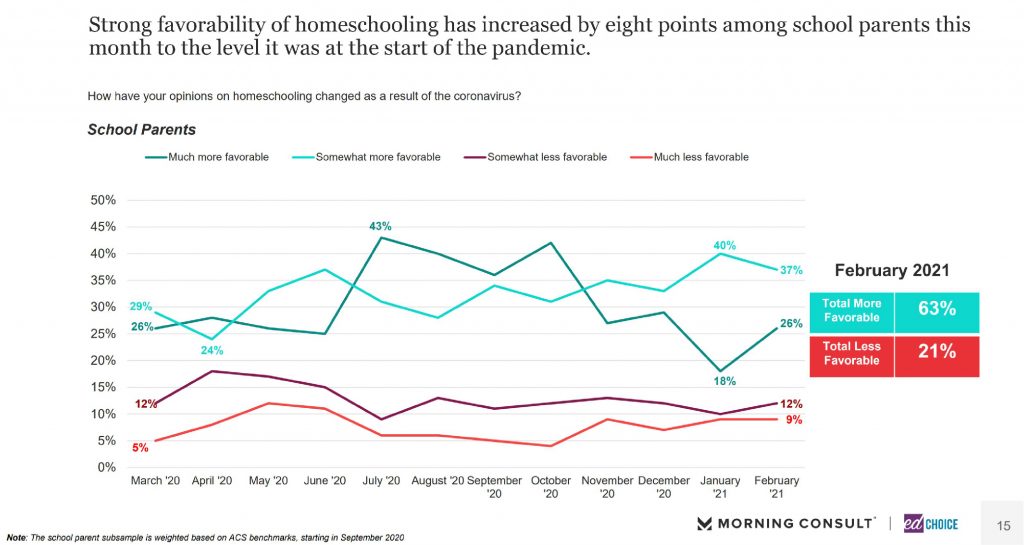
In the early days, 55 percent of respondents said that they were more favorable to homeschooling as a result of the pandemic while only 17 percent were less favorable. Both “more favorable” and “less favorable” have increased during the pandemic, but “more favorable” has grown more than “less favorable.” The overall level of favorability has remained durable during the entire crisis. Interestingly, the percentage of those who were “much more favorable” jumped around a bit, with huge peaks in the 40+ percent range over the summer and a drop to the low teens by January. It does look like a fair number of those folks did not turn against homeschooling entirely, but simply went from “much more favorable” to “somewhat more favorable.”
But these are national aggregates. We also have the ability to break down respondents by demographic characteristics. When disaggregated, some interesting insights emerge.
First, let’s look at the top five most favorable and bottom five least favorable demographic groups.
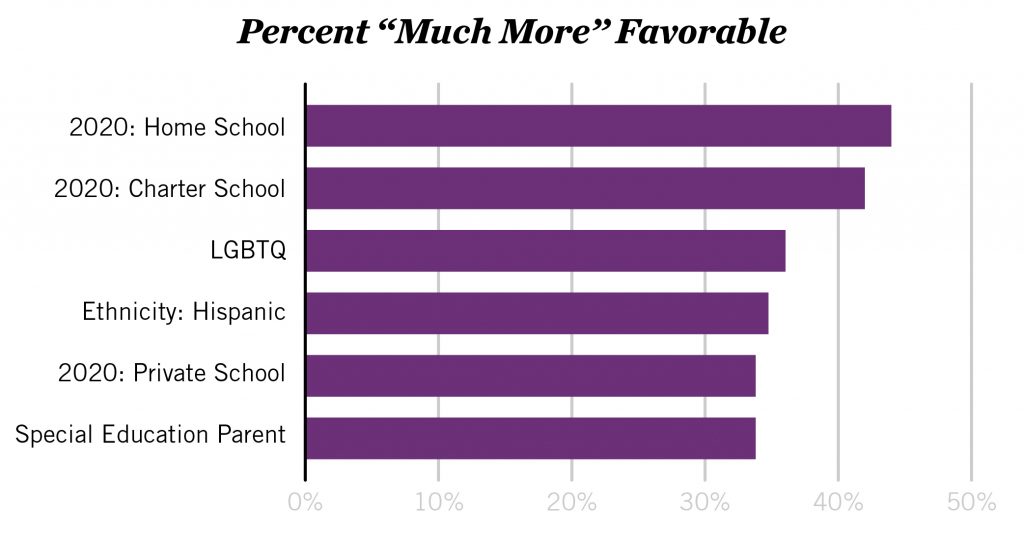
Amongst the top five (or really top six because there was a tie for number five), we see those who are already homeschooling at the top, perhaps not surprisingly. But after that, we see both those who are enrolled in charter schools and those enrolled in private schools in the top five, along with those who identify as LGBTQ, those who identify as Hispanic and special education parents.
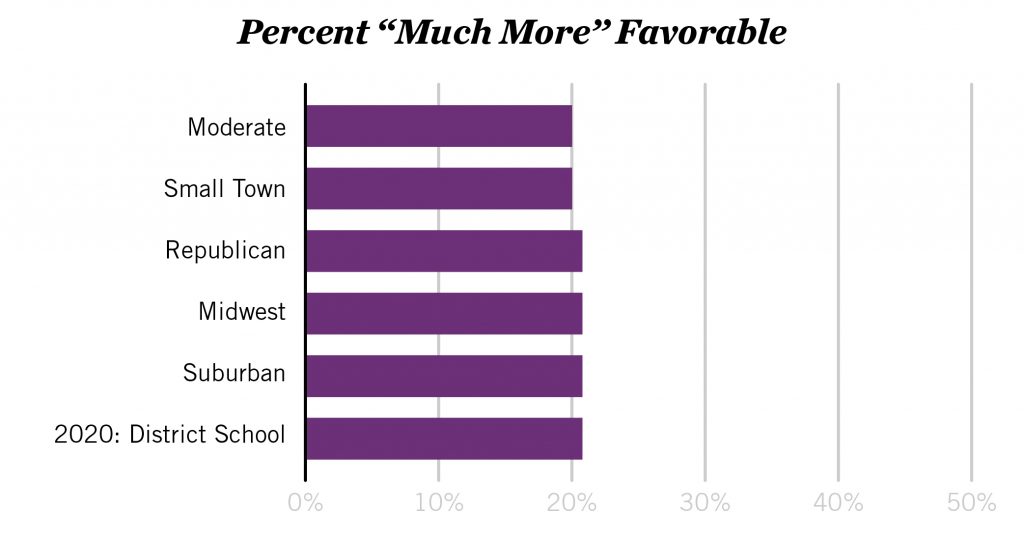
Amongst the bottom five (or bottom six because there was also a tie for number five in this group) we see those who identify as politically moderate as the least enthused, but close on their heels we see small town and suburban respondents, those who live in the Midwest, those who sent their child to a district school in 2020 and those who identify as Republicans.
If we look at racial identification, the results look like this:
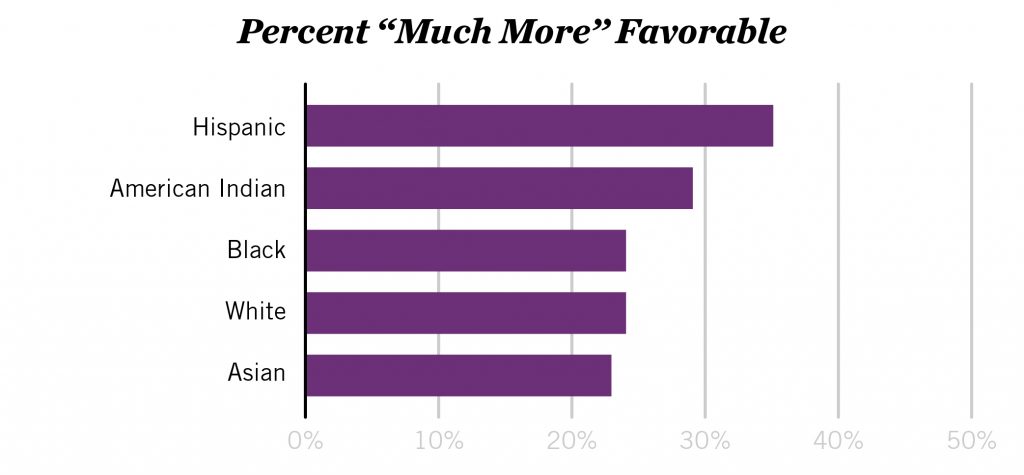
How about politics? Looking at both partisan and ideological identifiers, here are the numbers:
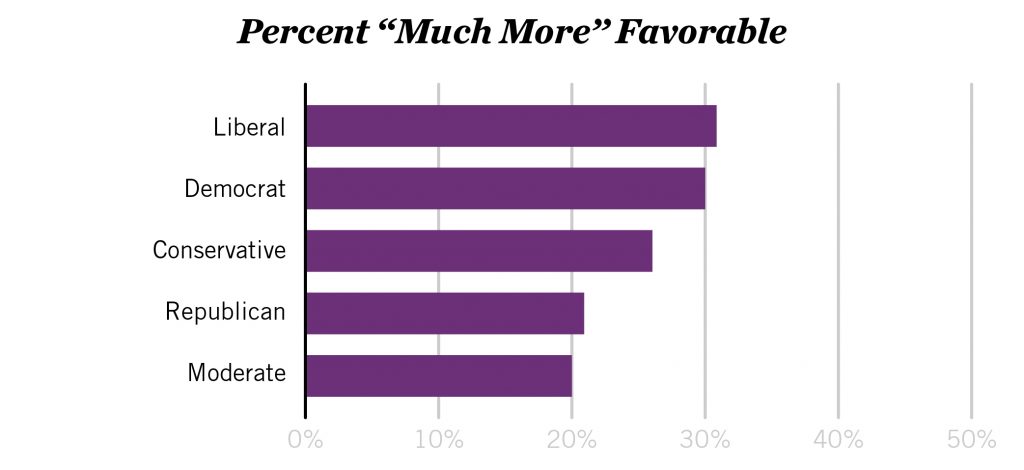
So what can we make of all of this?
I think these numbers portend interesting trends in homeschooling. It looks like those on the political left, those who identify as LGBTQ or racial or ethnic minorities, and families of children with special needs are all giving homeschooling a look as a result of the pandemic. Now, it is important to note that this is a relative measure, and it is perhaps because more conservative, white families already had a high opinion of homeschooling that they are less likely to be much more favorable to it. But even with that caveat, these subgroup numbers are interesting. If there is growth to be had in homeschooling, it is likely to come from groups that don’t traditionally associate with it.
I’d particularly like to highlight the interest from families of students with special needs. Pandemic-driven remote learning has been incredibly hard for students with special needs, so I don’t think we should be surprised that families of children with special needs are thinking about taking their child’s education into their own hands. The dirty secret of special education is that, for many families, all of the lofty promises of a Free and Appropriate Public Education and the Individuals with Disabilities Education Act and Individualized Education Plans often don’t amount to a hill of beans in the real world. Students do not get the services that they need, and I can’t even imagine how the pandemic exacerbated those problems. Thinking about how homeschooling for students with special needs might look and what support families might need is something that homeschooling and school choice advocates should really think about going forward.
This is the point in the blog where I have to remind readers that these are, of course, just opinions, and we’ll want to wait to see enrollment information before we get a real sense of where homeschooling is heading. But if opinions are the foundation for action, some changes might be afoot.


